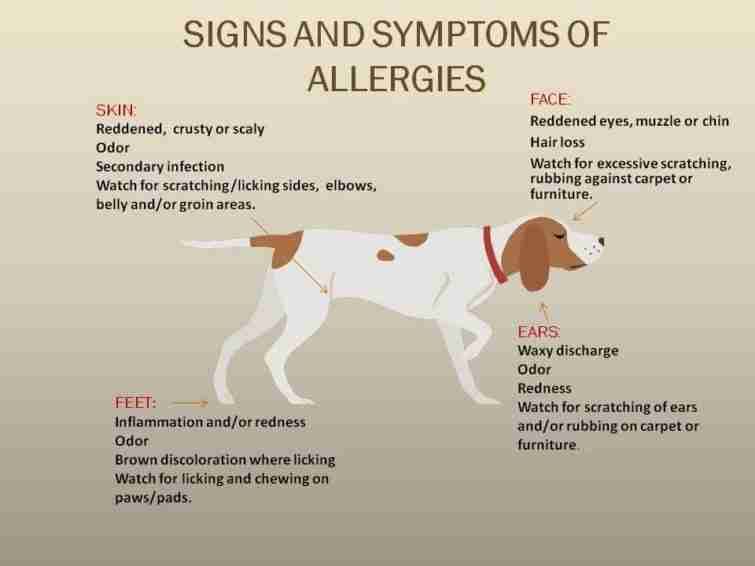
Signs Of Allergic Reaction To Food In Dogs. Skin lesions on dogs are frequently located on the face feet and ears. Anything from chronic ear inflammation gastrointestinal problems and chronic diarrhea to chronic gas licking their feet or an itchy rear end. You might think that the skin is the area thats most commonly affected by allergies in dogs but the gastrointestinal GI tract is just as likely to suffer when a dogs allergies are poorly controlled. A frightening yet harmless breathing issue in dogs that can be caused by an allergen is Reverse Sneezing.

In dogs food intolerances typically cause tummy troubles. Symptoms usually include skin problems allergic skin disease andor tummy problems such as diarrhoea and vomiting. More frequent bowel movements. A bee sting can cause anaphylactic shock in dogs leading to dog allergy symptoms as a swollen face hives or bumps and even indoors there are many common dog food allergies. Redness and hives may also be noted on the body and legs. Karen Becker discussing reverse sneezing.
Most dogs stung by a bee or another insect develop redness pain and swelling around the site but recover well on their own or with the help of an antihistamine medication.
A food allergy is when a dogs immune system overreacts to one or more of the ingredients in their diet. Karen Becker discussing reverse sneezing. Just like in humans a food allergy occurs when a dogs immune system mistakenly believes a specific food is harmful. While it has become common to watch out for the signs of life-threatening food allergies in young children it still comes as a surprise to some dog parents that their four-legged companions can also suffer from food allergies. These symptoms may include. The most common symptoms of a food allergyintolerance are digestive upsets or skin irritation.